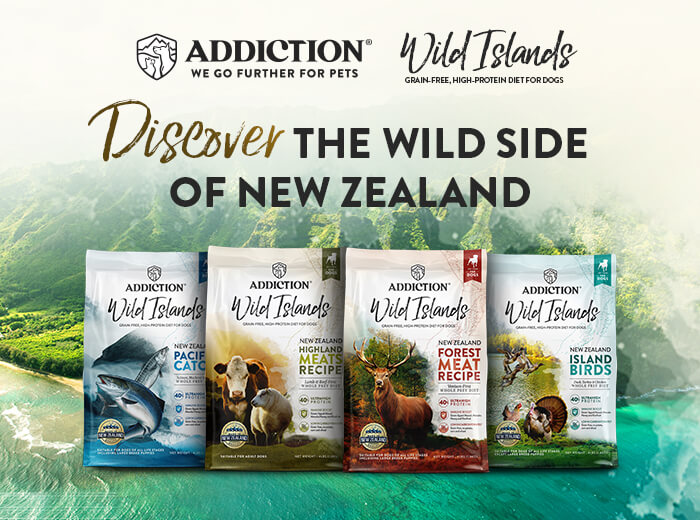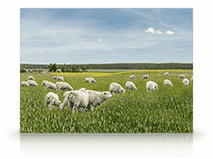Protein is essential in the diets of dogs and cats, but more protein is not necessarily better. When it comes to eating high protein foods, some animals benefit, some animals do not benefit, and some animals are actually harmed by being fed higher protein diets.
An individual pet’s age, activity level, general health, and breed are all factors to consider when deciding whether a high protein food is right for your dog or cat. Work with your veterinarian to find out the ideal diet for an individual animal.
What are proteins?
Proteins are the primary building blocks of brain, muscle, fur, and skin. Proteins affect metabolism; regulates pH; and are used in the production of antibodies, enzymes, hormones, and body tissues. Proteins can be turned into fat and stored, or can be burned as calories. If a pet’s body does not receive enough protein, or if the nutrients are not absorbed properly, their immune system becomes weak.
What is the role of protein in a well-balanced diet for dogs and cats?
Protein is one of the many important nutrients, along with fats, carbohydrates, vitamins, and minerals. The ideal diet for any animal is one that has the proper ratios for an animal to have a balanced diet.
Different animals have different ideal protein levels depending on their age, metabolism, activity level, and lifestyle. In general, average healthy adult dogs need diets that are approximately 18% protein. Average healthy adult and senior cats need diets that are approximately 25-30% protein.
Note: Percentages of proteins mentioned in this article are “dry matter values”, which is how protein recommendations are presented by scientists and feed control officials. Because percentages of proteins listed on moist food labels include water, we have to do a little math to calculate the dry matter value of protein contained in a moist pet food.
1. Look at the “Guaranteed Analysis” on a label. (Eg: 8.5% protein and 78% moisture)
2. Subtract the moisture percentage from 100. (Eg: 100 – 78 = 22)
3. With the resulting figure, divide it into the crude protein figure. (Eg:8.5 ÷ 22 = 38.5)
4. The total is the dry matter value. (Eg: 38.5% protein)
Which pets benefit from high protein diets?
• Puppies and kittens– To grow at a healthy rate, puppies do best on diets that are 25-30% protein, and kittens do best on diets that are 30-35% protein.
• Pregnant and lactating pets – Lactating dogs and cats need a higher amount of a good protein to support their own health and also produce high quality milk for their litters. Pregnant and lactating dogs do best on diets that are 25-30% protein, while 30% protein is best for pregnant and lactating cats.
• Sick or injured dogs and cats – Some veterinarians recommend higher protein diets to strengthen the immune system for pets recovering from illness: 25-35% protein for dogs, and 30% protein for cats.
• Performance and working dogs – High energy activities, like agility competitions and herding, can require higher amounts of protein. Protein promotes muscle strength and development, and provides calories that burn more slowly than carbohydrates, which is ideal for extended periods of activity. Performance and working dogs should have about 25% protein in their diet. Racing sled dogs have the highest protein requirements, around 35% protein.
Which pets should avoid high protein diets?
• Large breed puppies – Large breed dogs who grow too fast can develop painful joint problems, so giving them high-protein foods can be detrimental to their health.
• Dogs and cats with impaired kidney function or underlying health conditions that strain the kidneys (such as diabetes) – More protein means more work for the kidneys. Most veterinarians put these animals on lower protein diets in order to retain as much kidney health as possible.
• Elderly dogs – As dogs age, their bodies have increasing difficulty digesting proteins, so some veterinarians recommend that their diets have lower protein content.
What problems can be caused by having excess protein in the diet?
In theory, feeding a healthy adult dog or cat too much protein should not typically be a problem. In healthy dogs and cats, excess protein is either eliminated through urine or turned into fat.
However, there is growing evidence that too much protein in the diet is linked to a number of health problems for dogs and cats, including developmental irregularities, hyperactivity, and destructive behavior. Some veterinarians also believe that pets who routinely have excess protein in their diets suffer kidney damage.
It’s best to follow your veterinarian’s recommendation for the amount of protein in your pet’s food.
Which protein sources are best?
Many veterinary nutritionists say that it’s more important to evaluate the source and quality of protein than to look solely at the percentage of protein in a food.
Premium protein sources are those with the highest nutritional value, have nutrients that remain in-tact after processing, and with nutrients that are the easiest for dogs and cats to digest. Proteins from animal sources (muscle meat and organs) are much better for dogs and cats than proteins from vegetable sources because dog and cat bodies absorb amino acids in proper proportions when the amino acids come from animal protein. In fact, cats’ bodies have difficulty absorbing nutrients from non-meat sources. Cats’ bodies also require taurine, an amino acid found only in meat and eggs.
For both dogs and cats, the best sources of highly digestible protein are eggs, muscle meat (particularly beef, chicken, lamb), and organ meat. The poorer sources of protein for dogs and cats are wheat, corn, meat , soy, and rice.
Holistic veterinarians and nutritionists recommend proteins from wild caught or free-range animals because these sources are usually free of antibiotics, growth hormones, and other harmful chemicals.
Feeding novel proteins, which are proteins from sources that are new to an animal, is also a good idea. This is especially important for animals with allergies because replacing common proteins with novel proteins can often eliminate allergy symptoms.
Protein in Addiction Pet Foods
Addiction is the first company to champion using superior quality, wild game meats as a protein source for dogs and cats. We use premium, novel proteins from are wild caught or free range animals so our proteins are free of harmful GMOs and antibiotics. Further, most of our meat sources are from New Zealand where there is no Bovine Spongiform Encephalopathy (BSE) (commonly known as “mad cow disease”) or Foot & Mouth Disease.
Addiction Pet Food’s Raw Dehydrated dog foods have an average protein content of 20-25%. It is more intact nutritionally in terms of protein structure, enzymes and presence of co-factors. Addiction’s dry kibble formulas for puppies contain protein content of 25-30%. Addiction’s dry kibble formulas for cats contain protein content of 30-35%. (See the note above about “dry matter values” for an explanation of why the percentage listed on the packaging differs from the dry matter protein value.)
For more information / Sources
• “High Protein Dog Food” and “High Protein Cat Food”. VetInfo.com June 16 2012. http://www.vetinfo.com/high-protein-dog-food.html and http://www.vetinfo.com/high-protein-cat-food.html
• Kirk, Claudia A. et al. “Therapeutic Diets: Food You Can Use”. CVC San Diego Proceedings. June 30 2012. November 1 2009. http://veterinarycalendar.dvm360.com/avhc/article/articleDetail.jsp?id=715931
• Messonnier, Shawn. Natural Health Bible for Dogs & Cats. New York: Three Rivers Press, 2001.
• Pierson, Lisa A. “Feeding Your Cat: Know the Basics of Feline Nutrition”. CatInfo.org. August 2010. June 10 2012. http://www.catinfo.org
• Pitcairn, Richard. Dr. Pitcairn’s Complete Guide to Natural Health for Dogs & Cats. New York: Rodale Books, 2005.
• Veterinary & Aquatic Services Department, Drs. Foster & Smith. “Protein Requirements for Good Nutrition”. PetEducation.com. June 20 2012. http://www.peteducation.com/article.cfm?c=2+1661&aid=702











